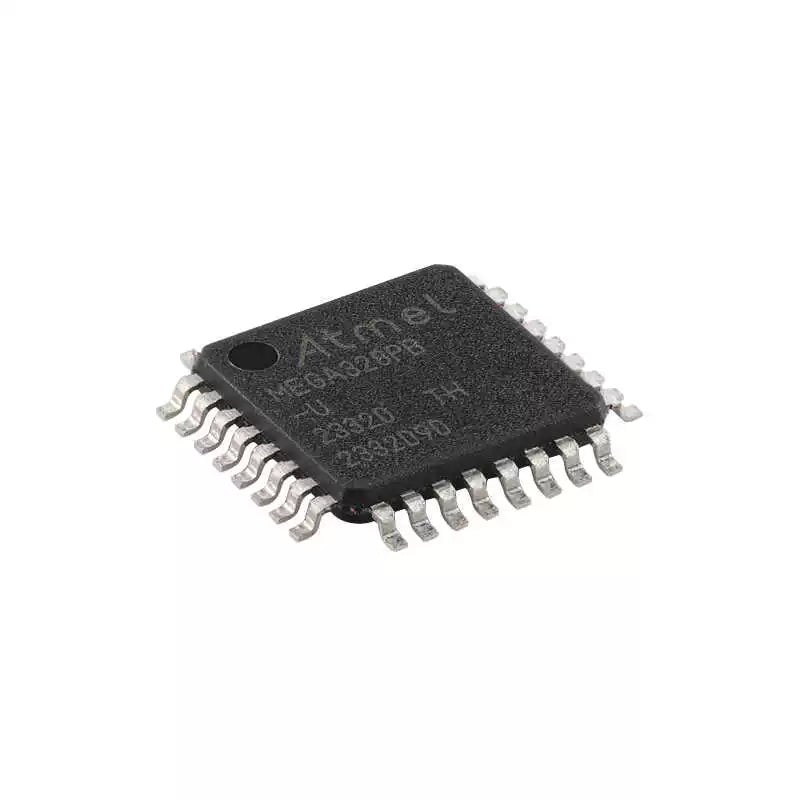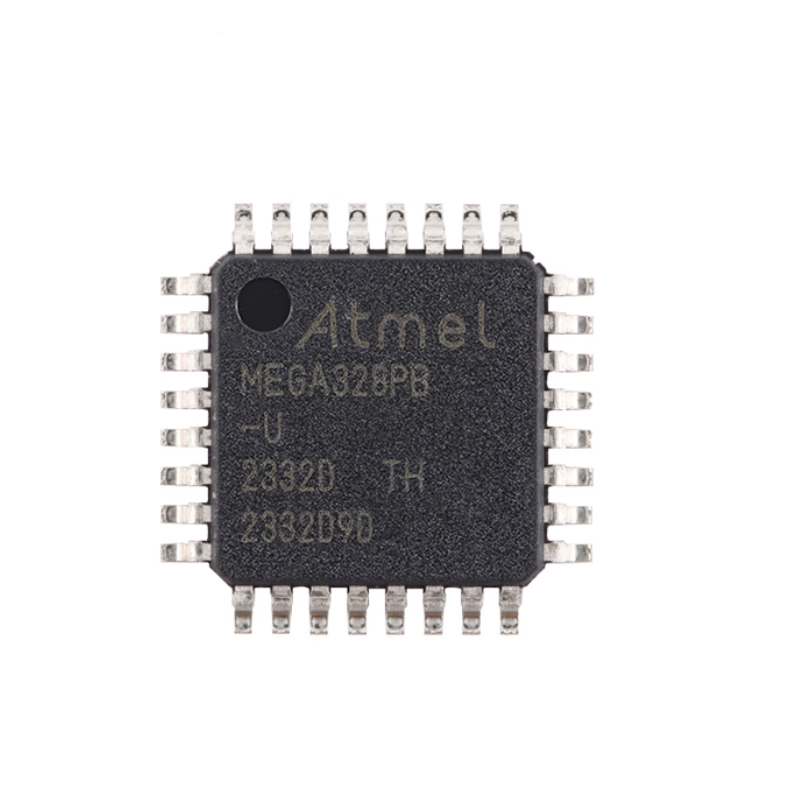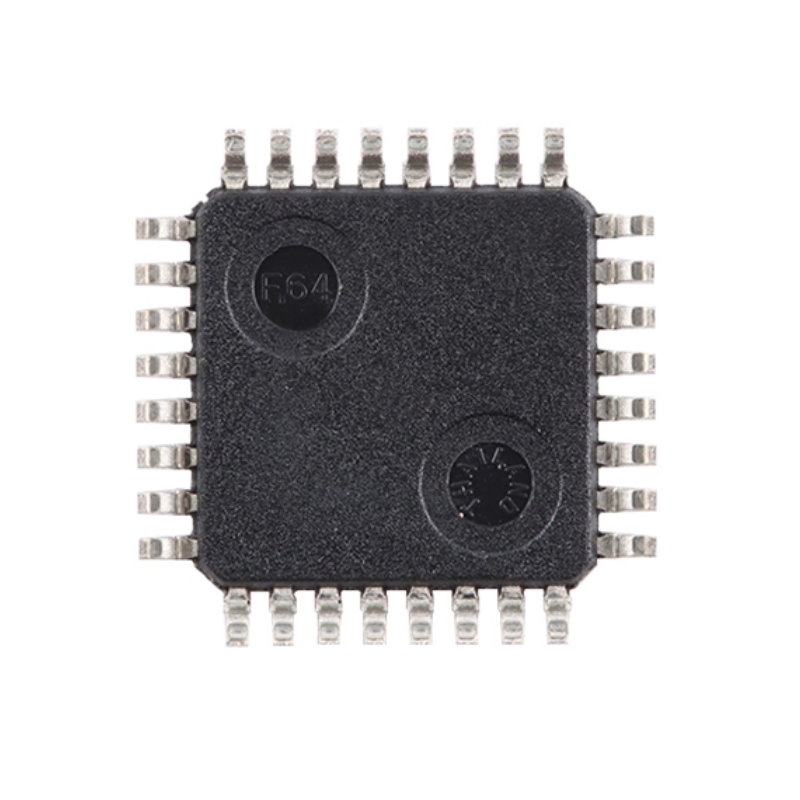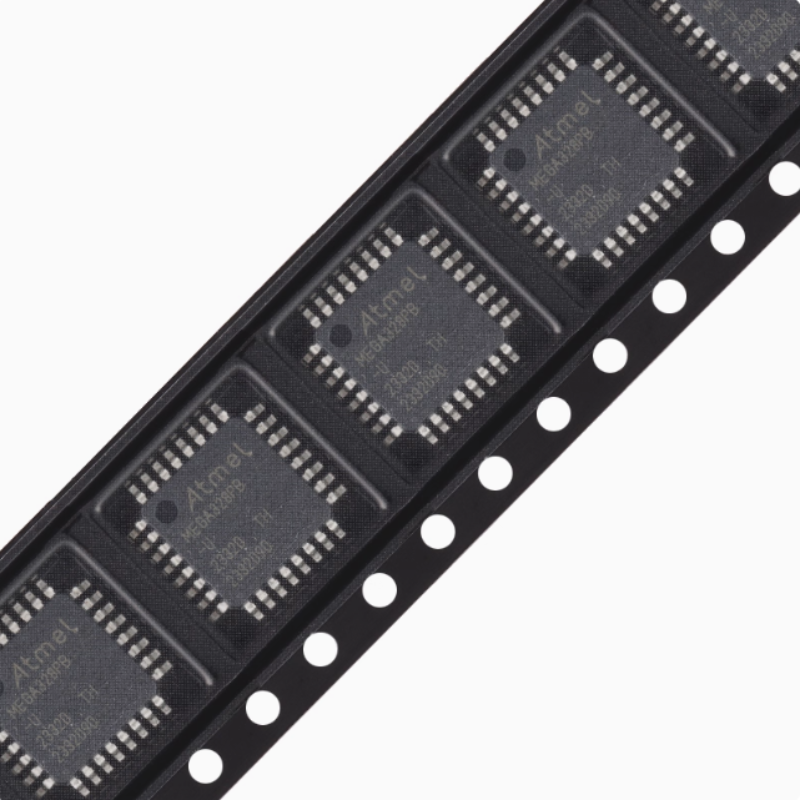Original Genuine ATMEGA328PB-AU TQFP-32 8-Bit AVR Microcontroller Chip
Original Genuine ATMEGA328PB-AU TQFP-32 8-Bit AVR Microcontroller Chip
Regular price
¥7.10 CNY
Regular price
¥0.00 CNY
Sale price
¥7.10 CNY
Quantity
Couldn't load pickup availability

ATMEGA328PB-AU/TQFP-32
8-bit AVR microcontroller chip
Product details
Introduction
The picoPower® ATmega328PB is a low-power CMOS 8-bit microcontroller based on the AvR® enhanced RISC architecture. By executing powerful instructions in a single clock cycle, the ATmega328PB achieves throughputs close to 1 MlPS per MHz. This empowers system designers to optimize the device for power consumption versus processing speed.
Features
High Performance, Low-Power AVR® 8-bit Microcontroller Family
Advanced RISC Architecture
131 Powerful instructions
Most Single Clock Cyde Execution
32 x 8 General Purpose Working Registers
Fully Static Operation
Up to 20 MIPS Throughput at 20 MHz
On-Chip 2-Cycle Multiplier
High Endurance Nonvolatile Memory Segments
32 KB of in-System Self-Programmable Flash program memory
1 KB EEPROM
2 KB Intemal SRAM
Write/Erase Cycles: 10,000 flash, 100,000 EEPROM
Optional Boot Code Section with independent Lock Bits
In-System Programming by On-chip Boot Program
True Read-While-Write Operation
Programming Lock for Software Security
Peripheral Features
Peripheral Touch Controller (PTC)
Capacitive Touch Buttons, Sliders, and Wheels
24 Self-Cap Channels and 144 Mutual Cap Channels
Two 8-bit Timer/Counters with Separate Prescaler and Compare Mode
Three 16-bit Timer/Counters with Separate Prescaler, Compare Mode, and Capture Mode
Real-Time Counter with Separate Oscillator
Ten PWM Channels
8-channel 10-bit ADC
Two Programmable Seral USARTs
Two Master/Slave SPl Serial Interfaces
Two Byte-Oriented Two-Wire Serial interfaces
Programmable Watchdog Timer with Separate On-chip Oscillator
On-Chip Analog Comparator
Interrupt and Wake-Up on Pin Change
Special Microcontroller Features
Power-On Reset and Programmable Brown-Out Detection
Intemal 8 MHz Calibrated Oscillator
External and Internal Interrupt Sources
Six Sleep Modes: Idle, ADC Noise Reduction, Power-save, Power-down, Standby, and Extended Standby
Clock Failure Detection Mechanism and Switch to intemal 8 MHz RC Oscillator in case of Failure
Individual Serial Number to Represent a Unique lD
I/O and Packages
27 Programmable l/O Lines
32-pin TQFP and 32-pin QFN /MLF
Operating Voltage:1.8-5.5V
lemperature Range:-40°C to 105°C
Speed Grade.
0-4 MHz @ 1.8-5.5V
0-10 MHz @ 2.7-5.5V
0-20 MHz @ 4.5-5.5V
Power Consumption at 1 MHz, 1.8V, 25°C
Active Mode: 0.24mA
Power-Down Mode: 0.2 μA
Power-Save Mode: 1.3 μA (induding 32 kHz RTC)
Product Description
The core combines a rich instruction set with 32 general purpose working registers. All the 32 registers are directly connected to the Arithmetic Logic Unit (ALU), allowing two independent registers to be accessed in a single instruction executed in one clock cyde. The resulting architecture is more code efficient while achieving throughputs up to ten times faster than conventional CISC microcontrollers.
The ATmega328PB provides the following features: 32 KB of in-System Programmable Flash with Read While-Write capabilities, 1 KB EEPROM, 2 KB SRAM, 27 general purpose l/O lines, 32 general purpose working registers, five flexible Timer/Counters with compare modes, internal and external interrupts, two serial programmable USART, two byte-oriented two-wire Seral interface , two SPl serial ports, an 8 channel 10-bit ADC in TQFP and QFN/MLF package, a programmable Watchdog Timer with internal Oscillator. Clock failure detection mechanism, and six software selectable power saving modes. The ldle mode stops the CPU while allowing the SRAM, Timer/Counters, USART, two-wire Serial interface, SPI port, and interrupt system to continue functioning. PTC with enabling up to 24 self-cap and 144 mutual-cap sensors. The Power-Down mode saves the register contents but freezes the Oscillator, disabling all other chip functions until the next interrupt or hardware reset. In Power-Save mode, the asynchronous timer continues to run, allowing the user to maintain a timer base while the rest of the device is sleeping Also ability to run PTC in Power-Save mode/wake-up on touch and Dynamic ON/OFF of PTC analog and digital portion. The ADC Noise Reduction mode stops the CPU and all I/O modules except asynchronous timer, PTC, and ADC to minimize switching noise during ADC conversions. In Standby mode, the crystal/ resonator Oscillator is running while the rest of the device is sleeping. This allows very fast start-up combined with low power consumption.
Products photography













